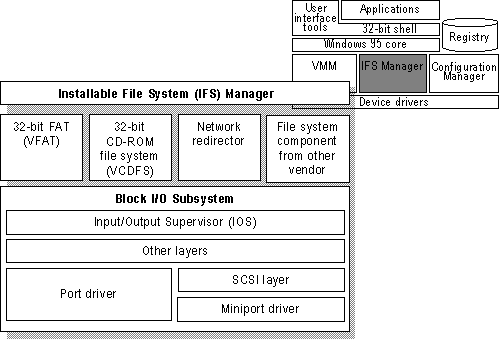
Windows 95 features a layered file system architecture that supports multiple file systems, including VFAT and CDFS.
The new file system architecture makes the computer easier to use and improves file and disk I/O performance. Features of the new file system architecture include long filename support and a dynamic system cache for file and network I/O.
Long filename support improves ease of use because users no longer need to reference files by the MS-DOS 8.3 filename structure. Instead, users can specify up to 255 characters to identify their documents. In addition, filenames seem less cryptic and thus easier to read because Windows 95 hides the filename extensions from users.
Windows 95 I/O performance is dramatically improved over Windows 3.1. This is because Windows 95 features 32-bit protected-mode code for reading information from and writing information to the file system, and for reading information from and writing information to the disk device. It also includes 32-bit dynamically sizable caching mechanisms, and a full, 32-bit code path is available from the file system to the disk device.
Windows 95 includes an open file system architecture for future system support. It also provides disk device driver compatibility with Windows NT.
The following figure shows the file system architecture used by Windows 95.

The Windows 95 file system architecture is made up of the following components:
The following sections describe these components.